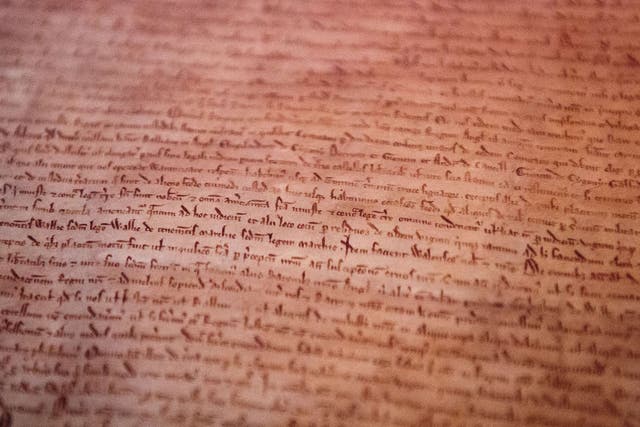

By 1215, thanks to years of unsuccessful foreign policies and heavy taxation demands, England’s King John was facing down a possible rebellion by the country’s powerful barons. Under duress, he agreed to a charter of liberties known as the Magna Carta (or Great Charter) that would place him and all of England’s future sovereigns within a rule of law.
Though it was not initially successful, the document was reissued (with alterations) in 1216, 1217 and 1225, and eventually served as the foundation for the English system of common law. Later generations of Englishmen would celebrate the Magna Carta as a symbol of freedom from oppression, as would the Founding Fathers of the United States of America, who in 1776 looked to the charter as a historical precedent for asserting their liberty from the English crown.
John (the youngest son of Henry II and Eleanor of Aquitaine) was not the first English king to grant concessions to his citizens in the form of a charter, though he was the first one to do so under threat of civil war. Upon taking the throne in 1100, Henry I had issued a Coronation Charter in which he promised to limit taxation and confiscation of church revenues, among other abuses of power. But he went on to ignore these precepts, and the barons lacked the power to enforce them. They later gained more leverage, however, as a result of the English crown’s need to fund the Crusades and pay a ransom for John’s brother and predecessor, Richard I (known as Richard the Lionheart), who was taken prisoner by Emperor Henry VI of Germany during the Third Crusade.
The 13th‑century pact inspired the U.S. Founding Fathers as they wrote the documents that would shape the nation.
Six fascinating facts about the Great Charter's story and its significance.
Through amendments and legal rulings, the Constitution has transformed in some critical ways.
Written in Latin, the Magna Carta (or Great Charter) was effectively the first written constitution in European history. Of its 63 clauses, many concerned the various property rights of barons and other powerful citizens, suggesting the limited intentions of the framers. The benefits of the charter were for centuries reserved for only the elite classes, while the majority of English citizens still lacked a voice in government.
In the 17th century, however, two defining acts of English legislation–the Petition of Right (1628) and the Habeas Corpus Act (1679)–referred to Clause 39, which states that “no free man shall be…imprisoned or disseised [dispossessed]… except by the lawful judgment of his peers or by the law of the land.” Clause 40 (“To no one will we sell, to no one will we deny or delay right or justice”) also had dramatic implications for future legal systems in Britain and America.
American Revolution HistoryIn 1776, rebellious American colonists looked to the Magna Carta as a model for their demands of liberty from the English crown on the eve of the American Revolution. Its legacy is especially evident in the Bill of Rights and the U.S. Constitution, and nowhere more so than in the Fifth Amendment (“Nor shall any persons be deprived of life, liberty or property without due process of law”), which echoes Clause 39. Many state constitutions also include ideas and phrases that can be traced directly to the historic document.
Four original copies of the Magna Carta of 1215 exist today: one in Lincoln Cathedral, one in Salisbury Cathedral, and two in the British Museum.
Stream American Revolution documentaries and your favorite HISTORY series, commercial-free.